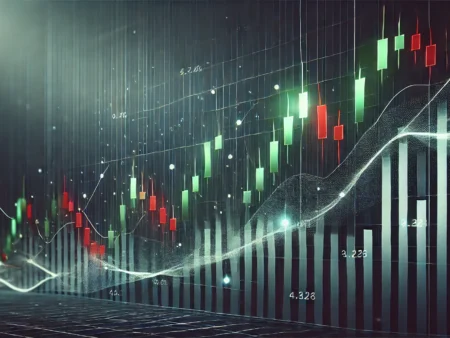The Psychology of Impulsive Trading: How to Recognize It and Overcome It
In the fast-paced world of financial markets, emotions can often get the best of traders. One of the most common psychological pitfalls that traders experience is impulsive trading. Impulsive trading occurs when a trader makes spontaneous, emotionally-driven decisions to enter or exit trades without following their predetermined strategy or plan. This kind of trading behavior can be highly detrimental to a trader’s success and can lead to significant financial losses.
In this article, we will explore what impulsive trading is, provide real-world examples, and, most importantly, offer actionable tips and strategies to help traders manage and overcome this destructive habit.
What is Impulsive Trading?
Impulsive trading refers to the act of making decisions based on emotional reactions rather than following a structured trading plan. These impulsive decisions are typically influenced by emotions such as fear, greed, excitement, frustration, or even boredom. Impulsive traders often deviate from their pre-established strategies, ignoring technical or fundamental analysis, risk management rules, or market conditions.
Impulsive trading is a behavioral trap that can occur in all types of trading environments, whether in forex, stocks, cryptocurrencies, or commodities. The nature of financial markets—with rapid price movements, opportunities that seem fleeting, and constant news updates—can create a perfect storm for impulsive decisions.
Examples of Impulsive Trading
To understand impulsive trading better, let’s look at a few common scenarios where traders might fall victim to this psychological pitfall:
1. Chasing the Market
A trader watches a stock or currency pair rise quickly and, out of fear of missing out on further gains, jumps into the trade without proper analysis. As a result, the trader buys near the top of the price movement, only to see the asset’s price reverse shortly afterward. This behavior is driven by FOMO (fear of missing out) and leads to poorly timed entries.
2. Revenge Trading
After suffering a loss, a trader feels frustrated and decides to immediately place another trade to “make back” the lost money. This new trade is typically made without proper planning or analysis and often results in further losses. This is an example of revenge trading, where emotions drive the decision-making process rather than logic.
3. Ignoring the Trading Plan
A trader has a well-structured plan that includes a stop-loss level to minimize losses. However, when the price reaches the stop-loss, the trader impulsively moves the stop further away, refusing to accept the loss in hopes that the market will reverse. This decision is driven by hope rather than sound risk management, often leading to larger losses.
4. Overtrading
A trader gets into a rhythm, perhaps following a few successful trades, and begins to feel invincible. In this emotional high, the trader starts opening multiple trades without conducting proper analysis, driven by overconfidence and excitement. This behavior is called overtrading and can lead to poor decision-making and overexposure to risk.
The Psychological Triggers Behind Impulsive Trading
To deal with impulsive trading effectively, it’s important to understand the underlying psychological triggers. Here are some key emotions and mental states that can lead to impulsive decisions:
1. Fear
Fear is a powerful motivator that often causes traders to make irrational decisions. The fear of missing out (FOMO) can lead to chasing trades, while the fear of losing money can cause traders to exit trades prematurely or move their stop-losses, increasing risk.
2. Greed
Greed can push traders to take larger risks than they would normally be comfortable with or encourage overtrading. The desire for quick profits often leads traders to deviate from their strategy in pursuit of more immediate gains.
3. Frustration and Anger
After experiencing a loss, frustration and anger can cloud a trader’s judgment. Revenge trading—where traders try to recoup losses quickly—is often driven by these emotions, leading to hasty, poorly thought-out trades.
4. Overconfidence
When traders experience a series of wins, they may start to believe that they have mastered the markets, leading to overconfidence. Overconfidence often results in traders ignoring risk management principles or entering trades without careful analysis.
5. Impatience
The market often requires time and patience to deliver results, but impatient traders may enter trades impulsively, not wanting to “wait” for the perfect setup. They might enter trades without proper confirmation from technical indicators or other aspects of their strategy.
How to Deal with Impulsive Trading
If you struggle with impulsive trading, you’re not alone. Many traders face this challenge at some point in their journey, but with discipline and the right mindset, it’s possible to overcome it. Here are some practical tips to help you deal with impulsive trading:
1. Develop and Follow a Trading Plan
The most effective way to combat impulsive trading is to have a well-structured trading plan. Your plan should include clear entry and exit strategies, stop-loss levels, and profit targets. Stick to the plan no matter what happens in the market. By following a plan, you remove emotional decision-making from your trades and rely on logic and strategy instead.
Action Tip:
Write down your trading plan and review it before each trading session. Reassure yourself that every trade you make will be based on your strategy, not emotions. If you find yourself deviating from the plan, step away from the screen and reevaluate.
2. Use Stop-Losses and Take Profits
One of the best ways to avoid making impulsive decisions during trades is to set stop-loss and take-profit orders ahead of time. These predefined levels act as a safety net, ensuring that your trades are closed automatically once your set risk threshold or profit target is reached. This removes the temptation to exit or enter trades based on emotional reactions to market movements.
Action Tip:
Always set your stop-loss and take-profit levels before entering a trade. Avoid moving them once the trade is in progress unless you’re trailing your stop to lock in profits based on your strategy.
3. Keep a Trading Journal
Maintaining a trading journal is an excellent way to track your behavior and identify patterns of impulsive trading. By recording every trade—including the reasoning behind it, your emotions at the time, and the outcome—you can start to notice when and why you make impulsive decisions. Over time, this self-awareness will help you correct these behaviors.
Action Tip:
For every trade you take, log the following details: the entry and exit points, your emotional state at the time, and whether or not you followed your strategy. Review your journal regularly to spot impulsive patterns and improve your discipline.
4. Take Breaks and Control Your Environment
When you feel emotions rising—whether excitement after a win or frustration after a loss—step away from the screen. Trading while emotionally charged can lead to more impulsive decisions. Taking breaks can help you regain composure and think clearly.
Action Tip:
Establish a trading routine that includes scheduled breaks. If you feel emotionally overwhelmed during a session, take 5–10 minutes to step away, breathe, and refocus.
5. Implement Risk Management Rules
Effective risk management is essential for keeping impulsive trading in check. Never risk more than a small percentage of your trading capital on a single trade, and ensure your risk-to-reward ratio is favorable. By adhering to these principles, you’ll have a structured approach to handling risk, which helps reduce the emotional burden of losing trades.
Action Tip:
Decide on a maximum percentage of your capital you’re willing to risk per trade—usually 1-2%. Stick to this rule strictly, even when tempted to go for bigger, riskier trades.
6. Recognize Emotional Triggers
Becoming aware of your emotional triggers is key to stopping impulsive trading. Are you more likely to make impulsive decisions after a winning streak or a big loss? Do you tend to enter trades when you’re bored or frustrated? Recognizing these triggers allows you to pause before acting on emotion.
Action Tip:
Create a list of emotional states (such as anger, excitement, or boredom) that tend to lead to impulsive decisions. When you notice these emotions arise, delay trading until you feel grounded again.
7. Practice Mindfulness and Patience
Trading requires patience, but impulsive traders often lack it. Practicing mindfulness—being present in the moment without reacting emotionally—can help you manage your impulses. Meditation and breathing exercises can help improve your ability to stay calm under pressure and avoid making snap decisions.
Action Tip:
Incorporate 5–10 minutes of mindfulness exercises, such as deep breathing or meditation, into your daily routine. This can help you stay calm and composed during high-stress moments in the market.
Conclusion
Impulsive trading is a common psychological challenge that can undermine a trader’s success. Whether it’s the fear of missing out, revenge trading after a loss, or making decisions out of boredom, impulsive trading is fueled by emotions rather than strategy. However, by recognizing the triggers of impulsive behavior and implementing strategies like sticking to a trading plan, maintaining discipline, and using risk management tools, you can overcome the temptation to make impulsive trades.
By staying mindful of your emotional state, practicing patience, and holding yourself accountable through tools like trading journals, you’ll be able to build the discipline necessary to thrive in the financial markets. Remember, successful trading is not about reacting to the markets—it’s about following a well-thought-out strategy with focus and control.












